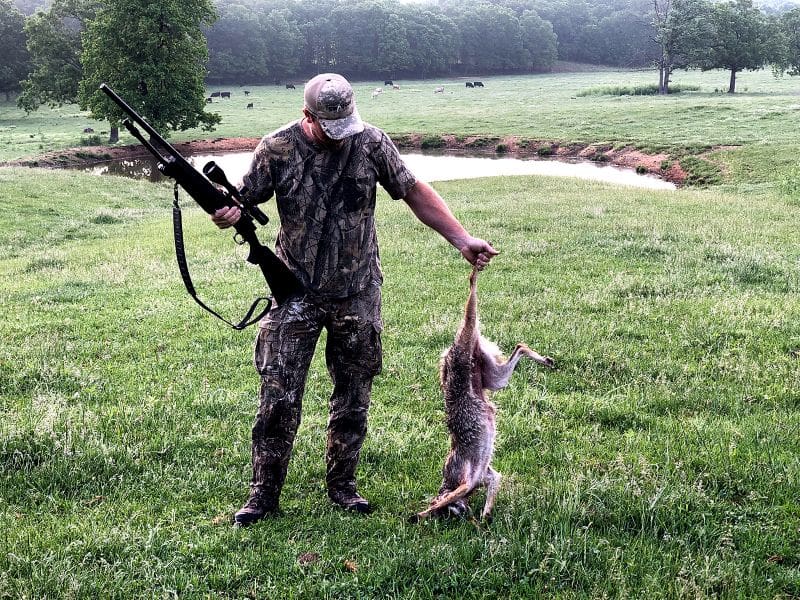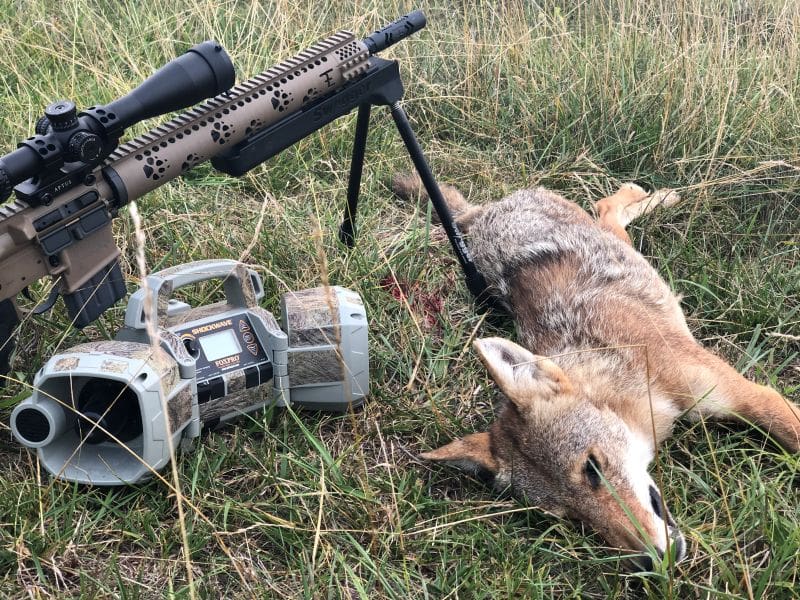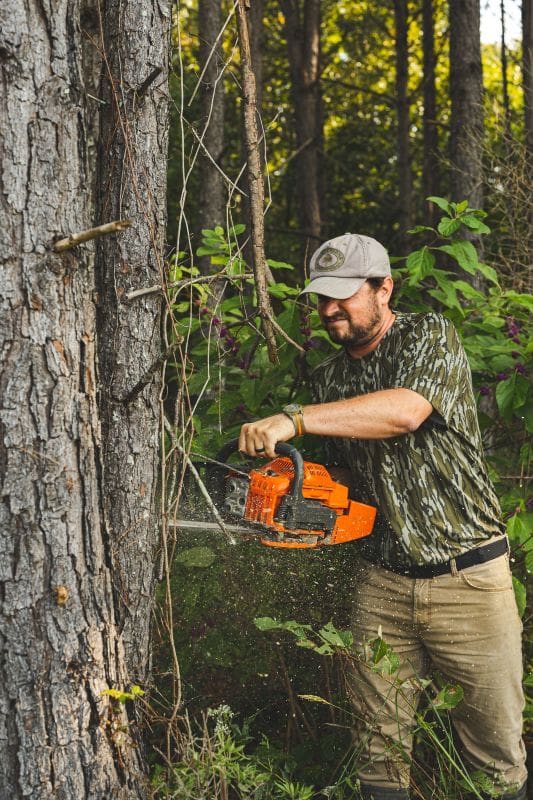In the wild, spring means new life, and for whitetail deer, that means fawning season. But not every fawn born in the woods will see its first birthday. Predation and poor nutrition are two of the leading causes of fawn mortality, especially in areas where the habitat is degraded or unmanaged.
As an avid predator hunter, I have seen firsthand the vicious cycle of Mother Nature when observing whitetail fawns and hungry coyotes. Coincidentally, while whitetail deer are having their fawns, coyotes are also starting to have their pups. Coyotes typically breed from mid-January through February across the country. They have a gestation period of 60 to 63 days, so most pups are born from late March through May. The average litter for each coyote consists of 4 to 7 pups. After 5 to 6 weeks, pups are weaned from their mother’s milk and begin eating natural food. By the time they reach 8 weeks old, they start to hunt for themselves. Why did I share all these facts? To give you a clearer picture: if you have 3 or 4 female coyotes that give birth on your property, each having an average of 4 to 7 pups, that is a lot of mouths to feed, and newborn or young fawns often become targets. So, what can we do as hunters?

For landowners, hunters, and conservation-minded stewards, taking proactive steps in habitat improvement, mineral supplementation, and predator control can significantly boost fawn survival and overall herd health. While I enjoy coyote calling and hunting, I wish I could say that is all you need to do to help fawns survive during the spring and early summer. However, more needs to be done to impact their survival rates significantly.
Minerals and Nutrition: The Foundation of Fawn Survival
Healthy fawns start with healthy does. A whitetail doe’s nutritional intake during late winter, spring, and early summer directly impacts fetal development, milk production, and the energy reserves she needs to care for her offspring. If she’s lacking key nutrients, the odds are stacked against the fawns from day one.
Minerals are often overlooked but are critical for a doe’s reproductive health and lactation, as well as for the skeletal development and immune strength of growing fawns. Key minerals include:
- Calcium & Phosphorus – Essential for bone development and milk production.
- Magnesium – Supports energy metabolism and reproduction.
- Sodium & Potassium – Crucial for hydration and cellular function.
- Trace Minerals (Zinc, Copper, Manganese, Selenium) – Strengthen immune response and overall health.
Providing mineral sites from late winter through summer allows does to access nutrients during critical gestation and lactation periods. Many commercial blends are available and contain the key ingredients listed above. Often, hunters do not place mineral sites until midsummer when they want to see those freshly grown racks of bucks on their game cameras. However, mid-winter and spring are the most crucial times for whitetails to benefit from the minerals they consume. I’m often amazed when passing by one of my winter mineral sites while spring turkey hunting. Frequently, the hole that started in January has tripled in size due to the increased need for minerals from then to the time of turkey hunting. That is an obvious indicator that they need those minerals for survival.
Boosting Natural Nutrition
Beyond minerals, enhancing native forage and supplementing with additional feed can also have a significant impact. Planting spring and summer food plots with high-protein crops such as soybeans, alfalfa, clover, and chicory not only provides a good spot to hunt later in the fall but also serves a crucial purpose in the spring: to offer deer the best nutrition possible.
These plots supply the protein and energy necessary for milk production while offering fawns early foraging opportunities. Native browse and mast trees should also be managed to improve year-round habitat diversity.
Predator Control: Leveling the Playing Field
With proper nutrition from minerals and nutritious food plots, fawns are on the right track for a healthy life. Yet, as mentioned earlier, fawns face one of their biggest challenges in the early weeks: hungry predators. Although other predators can take down a fawn for food, coyotes are the most common threat, especially in areas where predator populations are unchecked or managed by hunters.
Research indicates that up to 50% offawns can be lost to predators in high-pressure areas. Coyotes are often the primary culprits due to their opportunistic nature and expanding range. Predators typically target fawns during their first 2-3 weeks of life when the young deer are most vulnerable, and their mothers keep them in dense cover.
Predator control can be controversial, but it’s a valuable wildlife management tool when conducted ethically and strategically, such as trapping and hunting during late winter.This timing aligns with fawning season preparations and can directly alleviate predation pressure when it matters most. However, it is often frowned upon by non-hunters who believe it is cruel or unethical to kill predators, whether through trapping or hunting. Nevertheless, I need to emphasize that it is our duty as hunters to help manage predator populations. There is no other animal that naturally preys on coyotes, making us, as hunters, the sole resource for managing them. When a coyote drags an innocent baby fawn from its mother, that’s not a pretty sight either.

Predator control is most effective when implemented as part of a comprehensive management plan, rather than simply as a recreational activity during the winter months. Hunting coyotes during the spring and summer is encouraged and effective; while killing every coyote on a property isn’t realistic, it can reduce localized populations during fawning season, which may tip the scales in favor of fawn survival.
Habitat
While minerals and predator control are key, don’t overlook habitat management. One may quickly wonder, how does habitat management contribute to fawn survival? Fawns require dense, diverse ground cover for bedding and concealment. Practices such astimber stand improvement, prescribed burns, and native grass plantings can create thick, protective fawning habitat that reduces predator visibility and access.
The Big Picture: Balance and Stewardship
If you want to help your deer herd thrive, especially the youngest and most vulnerable members, adopt a two-pronged strategy: maximize nutrition and minimize predation. Every mineral site and every predator removed before fawning season can make a difference. This isn’t just about increasing deer numbers; it’s about fostering healthier, more resilient herds, enhancing hunting opportunities, and ensuring that the next generation of whitetails has the best chance to thrive.

